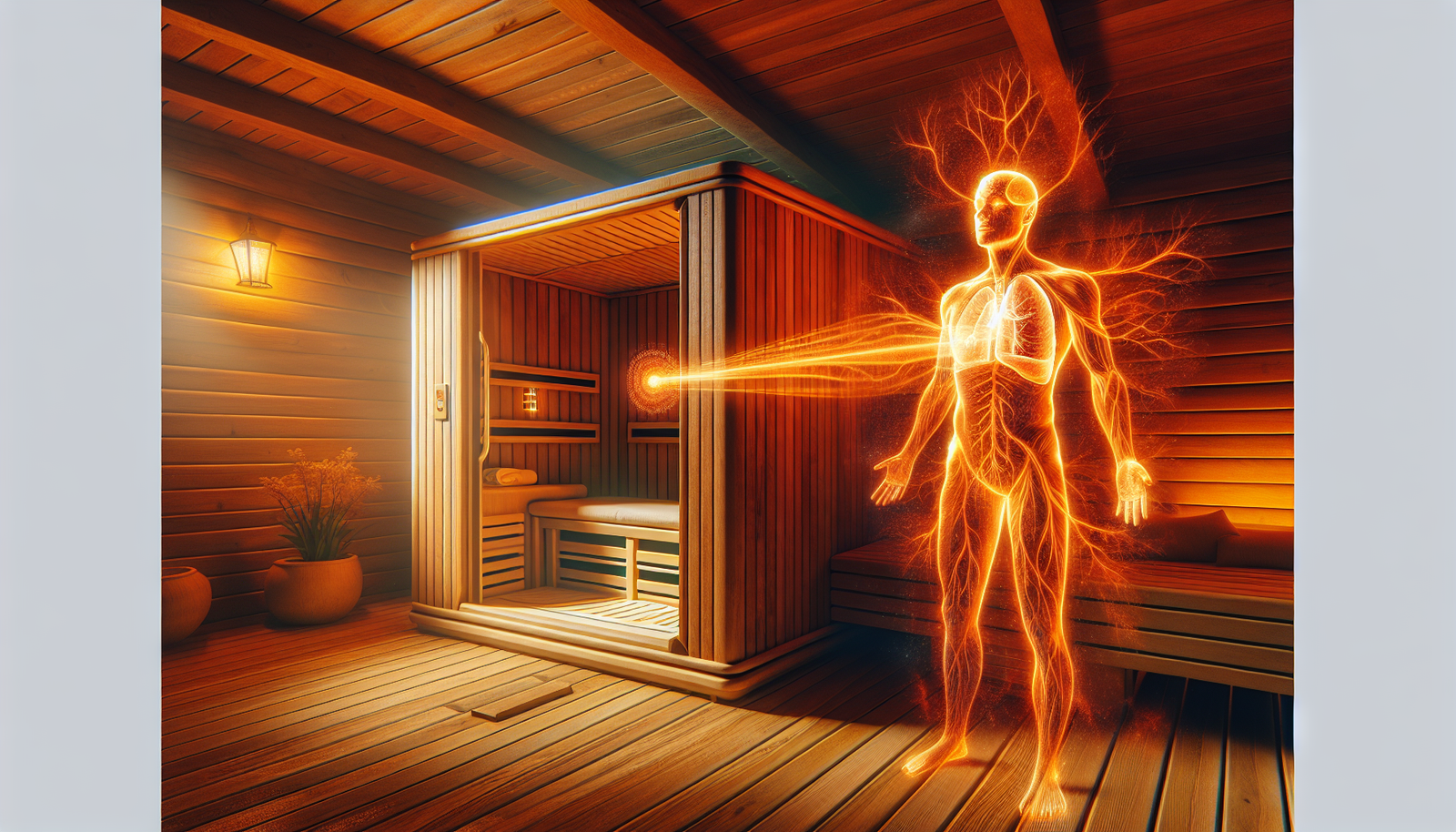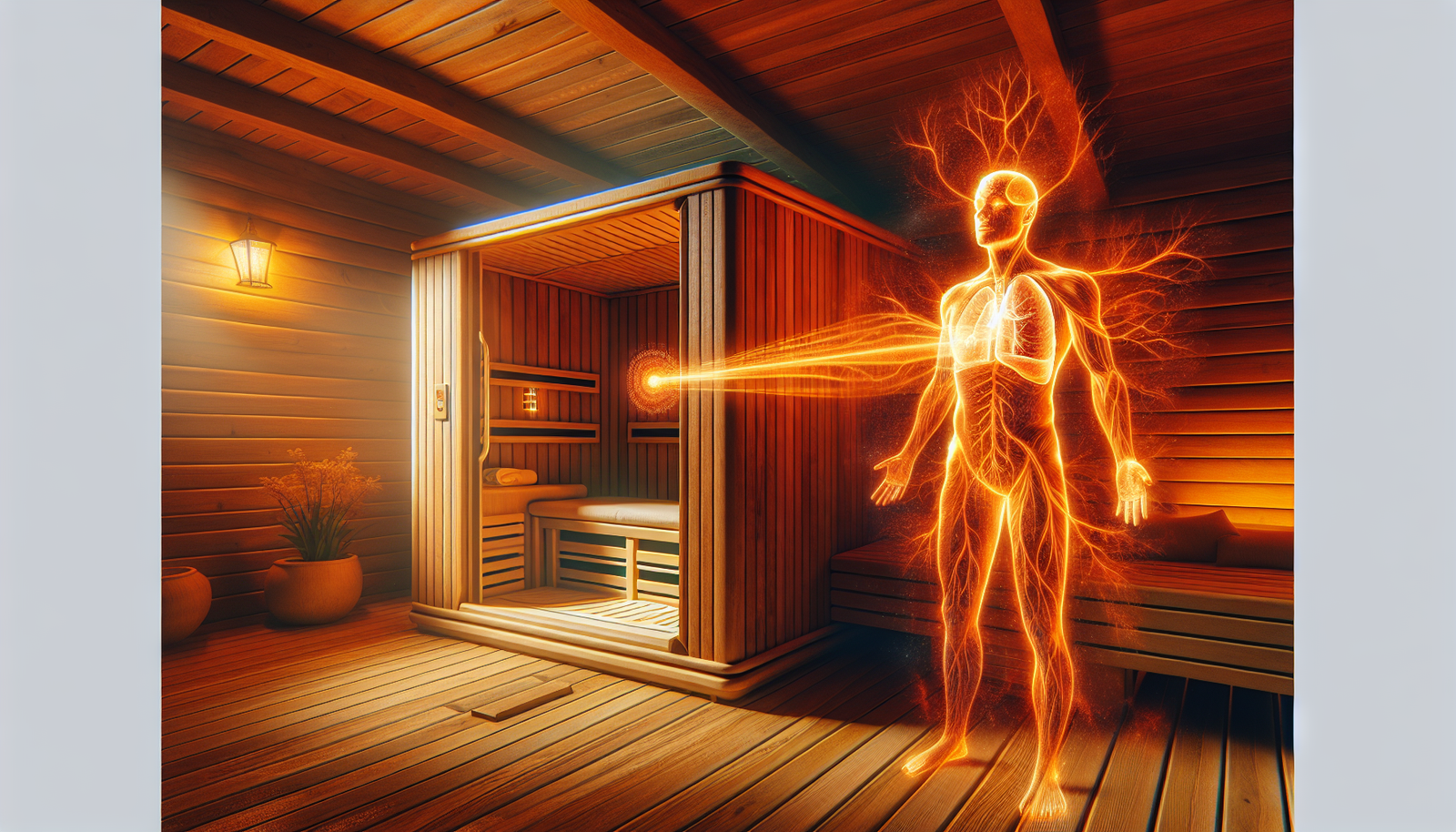If you’ve ever wondered whether infrared saunas could provide relief for your respiratory issues, you’re in the right place! With growing interest in alternative therapies, people are turning to these unique saunas as a potential solution for their breathing troubles. In this article, we’ll explore the potential benefits of infrared saunas in alleviating respiratory issues and how they may offer a refreshing and rejuvenating experience for those seeking relief. So, sit back, relax, and let’s discover whether infrared saunas can be a breath of fresh air for your respiratory health.
What are infrared saunas?
Definition of infrared saunas
Infrared saunas are a type of sauna that use infrared lamps or heaters to emit infrared radiation, which is then absorbed by the body. Unlike traditional saunas that heat the air around you, infrared saunas directly heat your body, providing a gentle and soothing warmth. This type of sauna operates at a lower temperature compared to traditional saunas, making it a popular choice for those who dislike the intense heat associated with conventional saunas.
How infrared saunas work
Infrared saunas work by emitting infrared radiation that penetrates deep into your body’s tissues. The infrared rays induce a gentle rise in your core body temperature, causing you to sweat and experience the benefits associated with sauna use. The heat generated by infrared saunas promotes various physiological responses in the body, including increased blood circulation, improved detoxification, reduction of inflammation, and relaxation.
Respiratory issues and their causes
Common respiratory issues
Respiratory issues encompass a wide range of conditions that affect the organs involved in breathing, such as the lungs, bronchi, trachea, and nasal passages. Some common respiratory issues include asthma, chronic bronchitis, sinusitis, allergies, and respiratory infections like the common cold and flu. These conditions can adversely impact your day-to-day activities and overall quality of life, making it crucial to explore various treatment options.
Causes of respiratory issues
Respiratory issues can have multiple causes, including environmental factors such as pollution, allergens, and irritants, as well as lifestyle choices like smoking or exposure to secondhand smoke. Genetic predisposition, respiratory infections, and certain medical conditions, such as chronic obstructive pulmonary disease (COPD), can also contribute to the development of respiratory issues. Identifying and addressing the underlying causes is important for effective management and prevention of further respiratory complications.

The potential benefits of infrared saunas for respiratory issues
Improved blood circulation
One of the potential benefits of infrared saunas for respiratory issues is improved blood circulation. The heat generated by infrared saunas promotes vasodilation, or the widening of blood vessels, which can enhance blood flow to the respiratory system. Improved circulation allows for the delivery of oxygen and nutrients to the lungs, bronchi, and nasal passages, potentially aiding in the healing and maintenance of respiratory health.
Detoxification
Infrared saunas are also believed to support detoxification, which may be beneficial for individuals with respiratory issues. Sweating induced by the infrared sauna helps eliminate toxins and pollutants from the body through the skin. By assisting the body in removing harmful substances, infrared saunas can potentially reduce the burden on the respiratory system, allowing it to function more efficiently.
Reduction of inflammation
Inflammation is a common characteristic of many respiratory issues, and reducing this inflammation is essential for symptom management. Infrared saunas have been suggested to have anti-inflammatory effects, potentially helping to alleviate respiratory symptoms. The deep heat generated by infrared saunas may penetrate the respiratory tissues and promote relaxation, reducing inflammation and swelling within the airways.
Relaxation and stress reduction
Respiratory issues can often be exacerbated by stress and anxiety, as these conditions can affect breathing patterns and trigger respiratory symptoms. Infrared saunas provide a serene and calming environment, which can aid in relaxation and stress reduction. The warmth and tranquility of the sauna may help alleviate respiratory-related stress, allowing for improved respiratory function and a potential reduction in symptoms.
Research on the effects of infrared saunas on respiratory issues
Studies on the effects of infrared saunas on respiratory health
While research specifically on the effects of infrared saunas on respiratory issues is limited, there is a growing body of evidence supporting their potential benefits for overall well-being. Some studies have investigated the impact of infrared saunas on aspects such as blood circulation, detoxification, and inflammation reduction, all of which can indirectly contribute to improved respiratory health.
Evidence supporting the benefits of infrared saunas for respiratory issues
Although scientific studies directly examining the effects of infrared saunas on respiratory issues are lacking, anecdotal evidence and testimonials from individuals with respiratory conditions often highlight positive experiences. Many users report a reduction in respiratory symptoms, improved breathing, and enhanced overall well-being after incorporating infrared sauna sessions into their wellness routines. However, more scientific research is needed to verify and understand these subjective reports.

Using infrared saunas for respiratory issues
Frequency and duration of sauna sessions
When using an infrared sauna for respiratory issues, it is important to consider the frequency and duration of sauna sessions. It is generally recommended to start with shorter sessions, such as 10-15 minutes, and gradually increase the duration as tolerated. Frequency can vary depending on individual needs and preferences, but 2-3 sessions per week are often recommended to experience the potential benefits of infrared saunas for respiratory issues.
Precautions and safety guidelines
Before using an infrared sauna for respiratory issues, it is essential to follow safety guidelines to ensure a safe and comfortable experience. Staying properly hydrated is crucial to prevent dehydration, especially during sauna sessions that induce sweating. It is also advisable to consult with a healthcare professional, particularly if you have any underlying medical conditions or concerns. Adhering to manufacturer instructions, maintaining appropriate sauna temperatures, and listening to your body’s signals are important factors in ensuring a safe and enjoyable infrared sauna experience.
Alternative treatments for respiratory issues
Conventional medical treatments
In addition to exploring the potential benefits of infrared saunas, it is essential to consider conventional medical treatments for respiratory issues. Depending on the specific condition, treatments can include medications, inhalers, pulmonary rehabilitation, and surgery. Conventional treatments are often prescribed and supervised by healthcare professionals and play a significant role in managing and controlling respiratory symptoms.
Natural remedies and lifestyle changes
Alongside conventional medical treatments, some individuals find relief from respiratory issues through natural remedies and lifestyle changes. These can include maintaining a healthy diet, staying physically active, avoiding triggers such as smoke and allergens, using humidifiers, practicing breathing exercises, and adopting stress management techniques. It is crucial to discuss any natural remedies or lifestyle changes with healthcare professionals to ensure they are suitable additions to an overall treatment plan.
Considerations before using an infrared sauna for respiratory issues
Consultation with a healthcare professional
Before incorporating infrared saunas into your respiratory health routine, it is important to consult with a healthcare professional. They can evaluate your specific respiratory condition, provide relevant advice, and determine whether infrared sauna use is appropriate for your individual circumstances. Healthcare professionals can offer personalized guidance and ensure that the use of infrared saunas aligns with your overall respiratory treatment plan.
Individual suitability
Not all individuals with respiratory issues may be suitable candidates for using infrared saunas. Certain respiratory conditions, such as acute respiratory infections, may temporarily worsen with heat exposure, making sauna use inadvisable during these periods. Additionally, individuals with specific medical conditions or concerns should exercise caution and consult with healthcare professionals to determine if infrared sauna therapy is appropriate for them.
Understanding potential limitations
While infrared saunas show promise in aiding respiratory health, it is important to understand their potential limitations. While some users report significant improvements in respiratory symptoms, the results may vary depending on individual factors and the specific respiratory condition being addressed. Infrared sauna therapy should not be considered a standalone treatment for respiratory issues, but rather as a complementary approach that can be integrated into a comprehensive treatment plan.
Personal experiences and testimonials
Anecdotal evidence from individuals with respiratory issues
Many individuals with respiratory issues have reported positive experiences with infrared saunas and shared their testimonials. These anecdotal accounts often speak of improved breathing, reduced respiratory symptoms, increased relaxation, and an overall sense of well-being. However, it is important to note that anecdotal evidence may not be scientifically verified, and individual experiences can vary. Personal testimonials should be viewed as subjective accounts and not as conclusive evidence of infrared sauna efficacy for respiratory issues.
Conclusion
While research specifically focused on the effects of infrared saunas on respiratory issues is limited, there is growing evidence suggesting their potential benefits for overall respiratory health. By promoting improved blood circulation, detoxification, reduction of inflammation, and relaxation, infrared saunas may contribute to the management and relief of respiratory symptoms. However, it is crucial to consult with a healthcare professional, consider individual suitability, and understand potential limitations before incorporating infrared saunas into a respiratory treatment plan. Further scientific research is needed to establish the specific mechanisms and benefits of infrared sauna therapy for respiratory issues.

